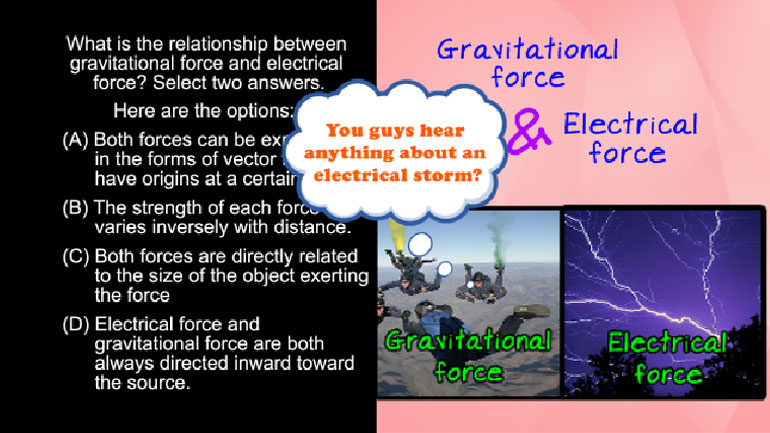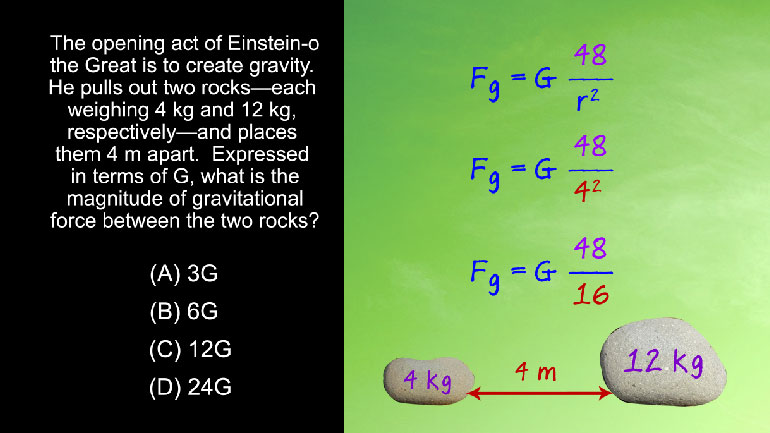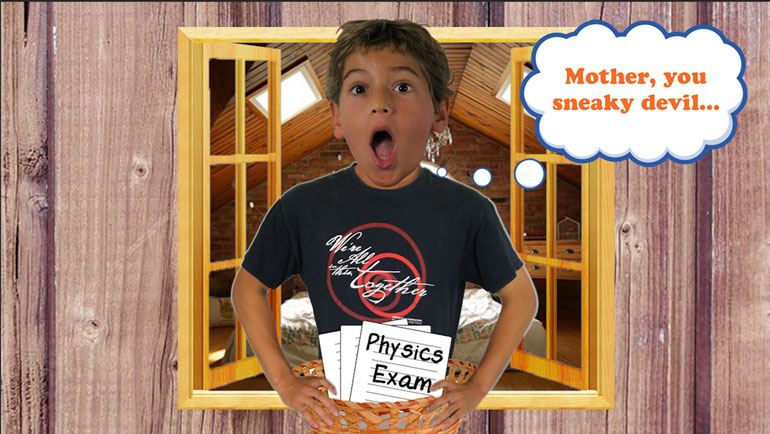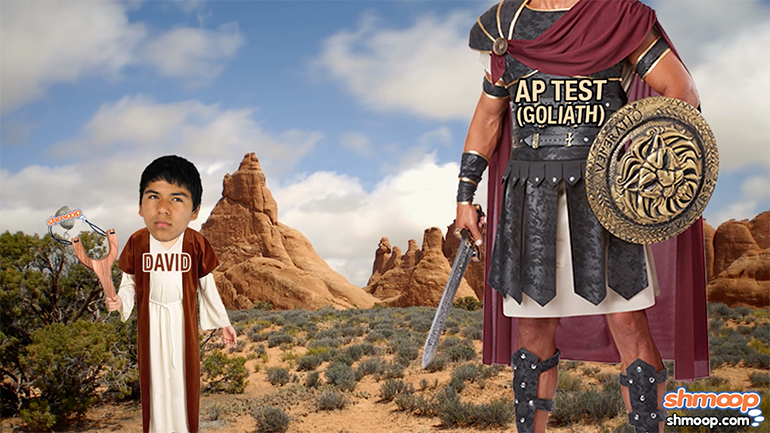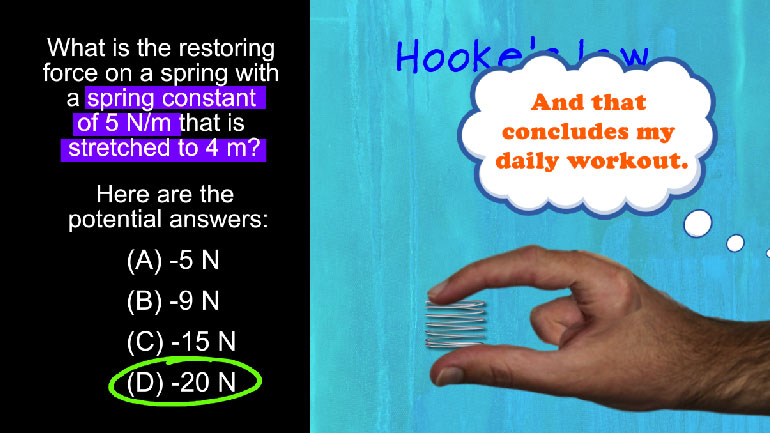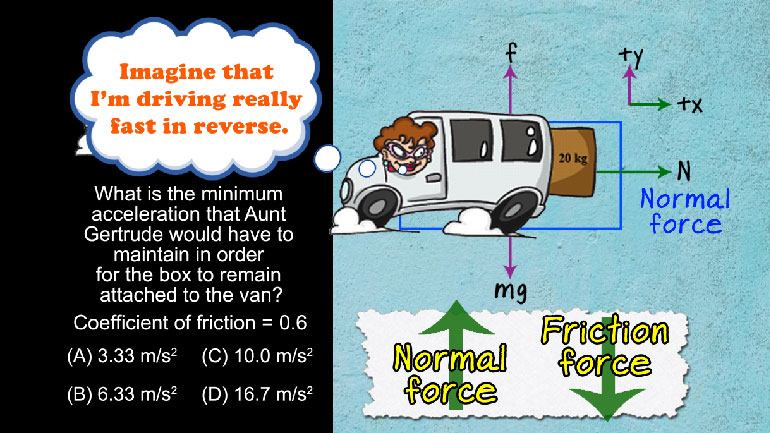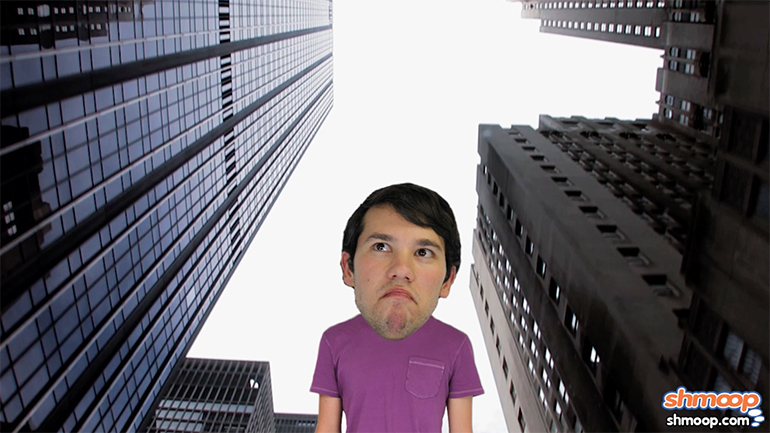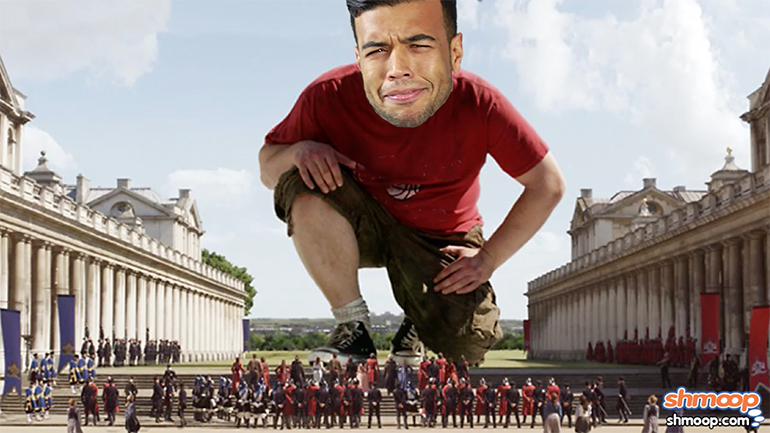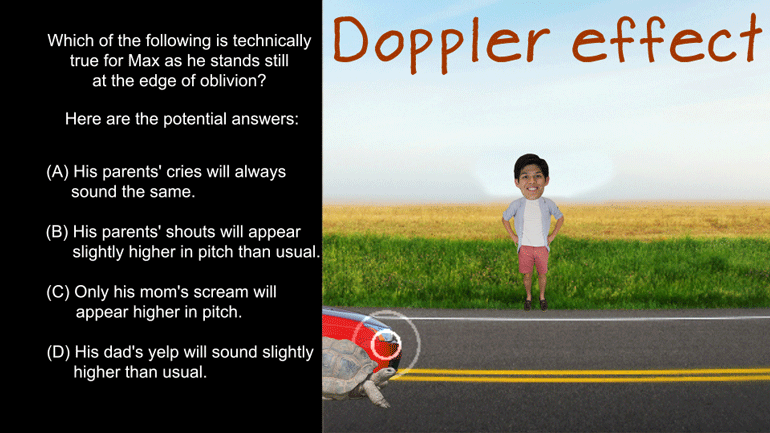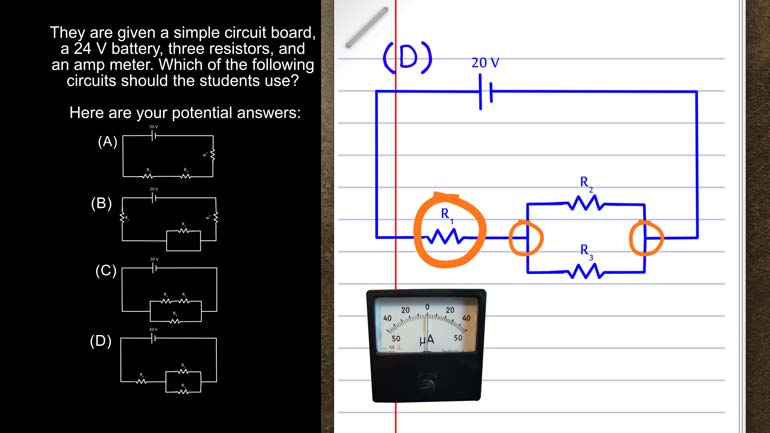ShmoopTube
Where Monty Python meets your 10th grade teacher.
Search Thousands of Shmoop Videos
Object Interaction and Forces Videos 13 videos
If there's one good thing about the heat death of the universe, it's that we'll all have an excellent excuse for dodging physics homework.
The real moral of the story here is just "don't get in the way of elephants or tigers." That is not the kind of kinetic energy you want to absorb.
Hi there. We'd like to wave hello to you, but the internet isn't letting us. So instead, accept this fun question about waves and physics! It's alm...
AP Physics 1: 3.4 Object Interaction and Forces 194 Views
Share It!
Description:
Sure, we can calculate force, as long as we get to stay safely away from the giant death trap elevator. You have fun up there, though.
Transcript
- 00:03
Alright here's your shmoop du jour brought to you by skyscrapers their [Skyscrapers in Chicago city]
- 00:06
impressive feats of engineering and we love to look at them you know with our
- 00:09
feet planted firmly on the ground the Willis Tower in Chicago is the tallest
- 00:13
building in the U.S. at 527 meters the 1,700 feet to reach the top floors [Willis Tower shown to be 1,729 feet]
- 00:21
tourists take a one-minute trip up an elevator that quickly accelerates to a
Full Transcript
- 00:26
high speed and intrepid schmooper weighs himself before getting on the elevator [Shmoop employee weighing himself before getting on the elevator]
- 00:30
and finds that the scale reads 500 n Newtons as the elevator begins its ascent
- 00:36
at constant acceleration he sees that the scale reads 950 Newton if the [Scale reading 950 N]
- 00:43
elevator descends with a constant acceleration equal to 1/2 the upward
- 00:49
acceleration what will the scale read on the ride
- 00:52
down and here are the potential answers... ok well we're dealing with three
- 00:58
separate forces here we have the normal force before we're even on the elevator [Luke Skywalker fighting Darth Vader]
- 01:02
the force when we're moving up in the elevator and the force when we're going
- 01:06
down all right well let's deal with the normal force first when we're on the
- 01:10
ground gravity pushes us down and the floor pushes us up these two forces [Gravity pushing down and the floor pushing up on a woman]
- 01:14
balance each other out.. if they didn't we'd float above the floor or crash
- 01:19
through it'd be kind of cool we're happy to report that the Willis Tower
- 01:22
has very sturdy floors that push back against gravity and we don't see anyone [Man stood in a glass window looking down from a skyscraper]
- 01:27
floating in Chicago so it appears the forces balance out so all this means
- 01:31
that the normal force minus mass times gravity equals zero well we're in luck
- 01:36
because we know the amount of force pushing down on the schmooper is 500 [White ball lands on 29 black on a roulette wheel]
- 01:40
Newtons and we can calculate his mass since mass times gravity equals Newtons
- 01:45
we can rearrange the equation so we have mass equals Newton's divided by gravity
- 01:50
for our sake here we'll also round gravity up to ten meters a second
- 01:55
squared when we plug in the numbers we find that his mass is 50 kilograms now [Re-arranged equation to find the mass]
- 02:00
when the elevator starts going up the force of gravity is still balanced out
- 02:03
by the force of the elevator floor but this time instead of equaling zero the [Man going up an elevator in the tower]
- 02:08
forces interact to equal mass times acceleration upwards all right well now
- 02:13
we can solve for upward acceleration all we have to do is subtract mass times
- 02:18
gravity from Newtons on the upward ride and divide that by mass okay some quick
- 02:23
calculations and we'll find that acceleration upward is nine meters per [Equation for acceleration upward shown as 9 meters per second squared]
- 02:27
second squared now we know that when the elevator starts slowing down the downward
- 02:32
acceleration is half of the upward acceleration well the downward force
- 02:36
equals negative mass times acceleration and downward acceleration equals
- 02:42
one-half of upward acceleration so the downward force minus mass times gravity
- 02:47
equals negative mass times half of upward acceleration all right we're
- 02:52
almost there I promise now we solve for the downward force which again equals [Woman waving her finger]
- 02:56
mass times gravity minus mass times one-half upward acceleration well we
- 03:01
multiply 50 kilograms by five point five meters per second squared and we get an
- 03:05
answer of 275 Newtons so the correct answer is option C let's quickly touch
- 03:11
on the other answer choices we could have knocked a and D out of the running [Boy on his phone gesturing at his laptop screen]
- 03:14
right away we know that there's a downward force in action here since
- 03:18
gravity never stops so there's no way a is correct and we know that the force [Young girls jumping up and down]
- 03:22
during the slowdown will be less than the force standing in place on the
- 03:27
ground so D would never work either and we also know that next time we go to [Man attempts to float in mid-air and falls down]
- 03:31
Chicago we'll stick to ground level attractions a super tall building in a
- 03:35
place called the windy city, yeah we don't even like to climb step ladders [Man looking up at Willis Tower with a step ladder]
- 03:39
and look out below....whoa boy!
Related Videos
AP Physics 1: 2.5 Changes and Conservation Law. At what point(s) in this situation is energy lost in any form?
AP Physics 1: 1.4 Waves. Which of the following is technically true for Max as he stands at the edge of oblivion?
AP Physics 1: 1.4 Changes and Conservation Laws. Find the current across R2.
AP Physics 1: 2.4 Changes and Conservation Laws. Which of the following circuits should the students use?
AP Physics 1: 1.5 Waves. What can possibly occur when the two waves reach each other?



